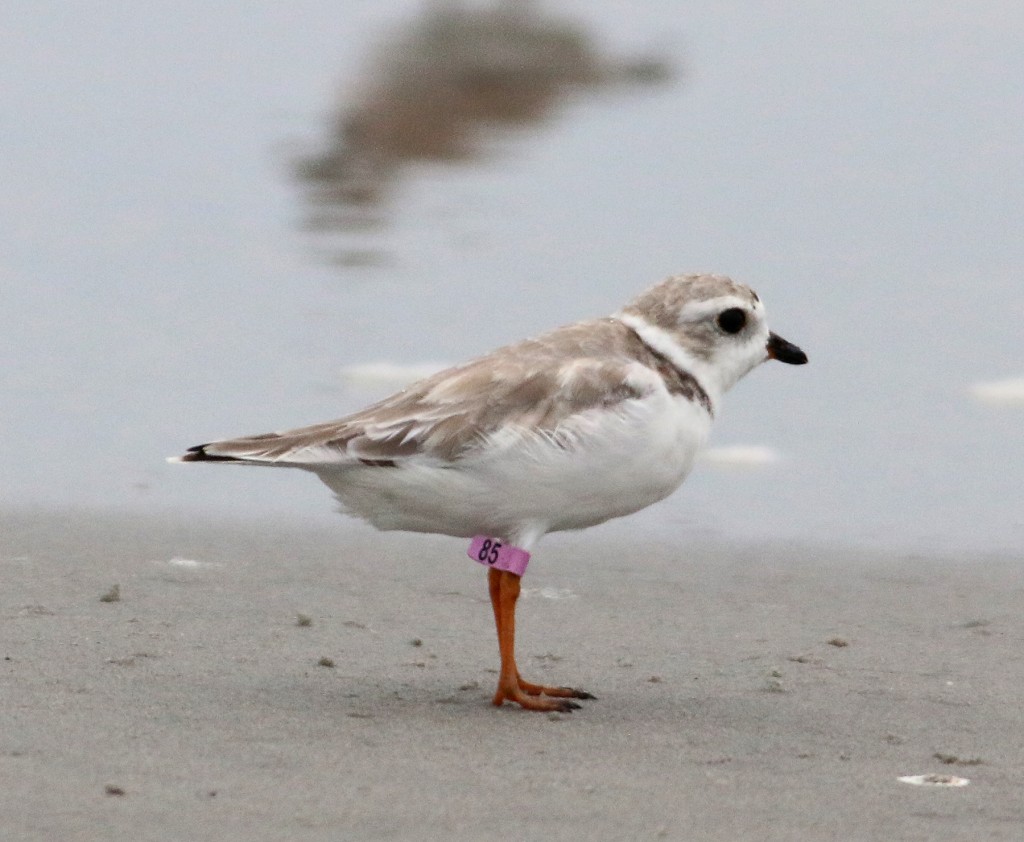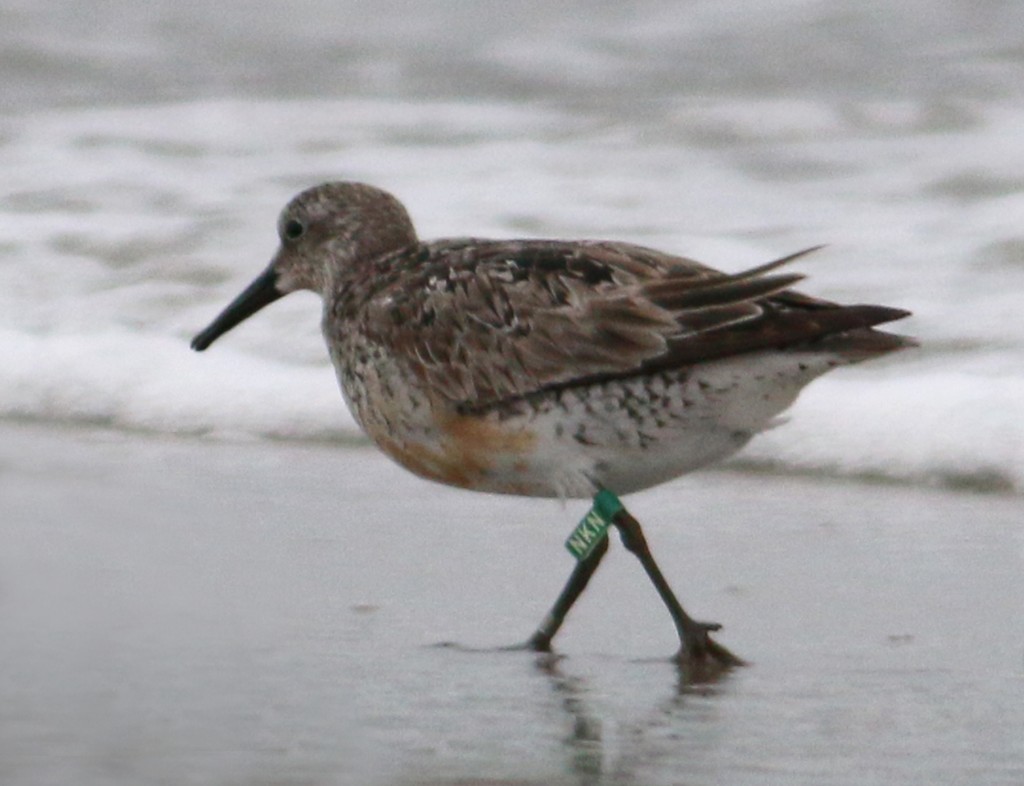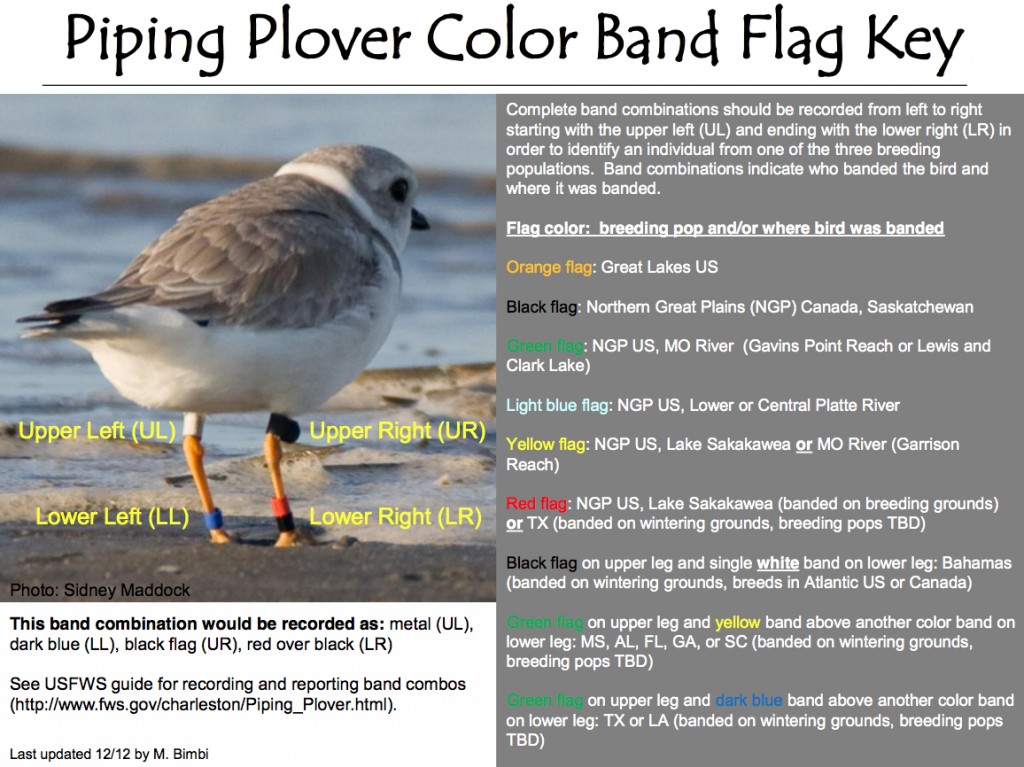In the past I have described the pleasure derived from reporting the banded Tundra Swan T207 and from reporting banded Snow Geese. Yesterday Jeanine and I took a long yet delightful walk in the North Brigantine Natural Area located just north of Atlantic City. The beach was full of birds. Here’s a view of a small part of the shoreline to give an idea of how packed it was, and this was fairly typical of what we saw along much of the shoreline. Only the southernmost part of the beach was open to vehicles, so once we got past the vehicle barrier, the beach was all ours. Well, ours and the birds. It was a wonderful feeling.
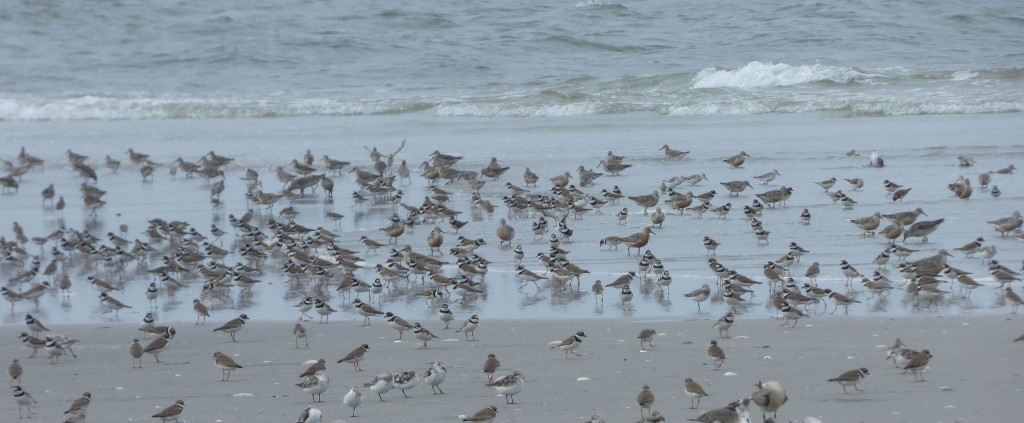
Here’s a view that was not unusual today: a shoreline full of birds. Most of them are Semipalmated Plovers, with good numbers of Sanderlings and Red Knots, and a smattering of Semipalmated Sandpipers.
We didn’t find any rare or unusual species today, but the sheer number of birds overcame the lack of rarities. Highlights were 170 Royal Terns, 450 Red Knots, 9 Piping Plovers, and a conservative estimate of 3,000 Semipalmated Plovers. Near the end of the day, as we were scanning the flock, we started noticing a few banded birds. Then more. And then more. Eventually we tallied eight banded Red Knots and four banded Piping Plovers. The birds have different bands, depending on where they were banded. Five Red Knots had green flags with white codes, and three had orange flags with black letters. The Piping Plovers had either an alphanumeric flag or a series of color-coded bands. Examples of these banding strategies are shown below.
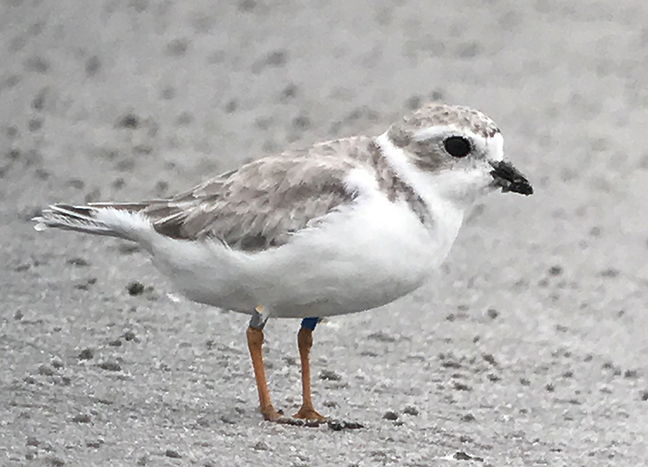
Here’s a Piping Plover that has only color bands, without any alphanumeric flags. The bands are not always easy to see. This bird has a yellow band above a silver band on its upper right leg and a blue band can be seen on its upper left leg.
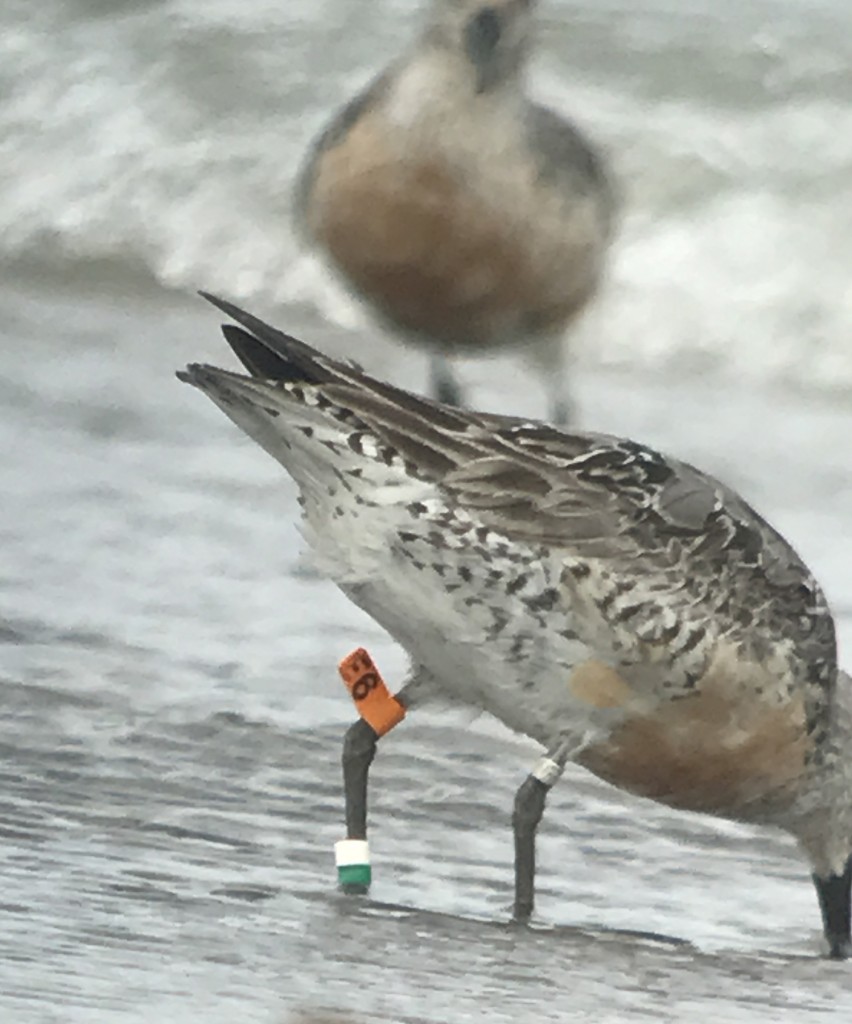
Three Red Knots had orange flags with black lettering. This bird (E6) has supplementary color-coded bands on its lower left leg and a federal metal band on its upper right leg.
As soon as I returned home I assembled the information and reported it to the US banded bird website, which allowed me to access the banding location and where the birds subsequently were re-sighted. So what did we learn from reporting this information?
Let’s start with the Red Knots. The flags indicate the country where the birds were banded. Green flags with white lettering indicate that they were banded in the US. Birds with orange flags with black lettering were banded at sites in Argentina!! Unfortunately, the researcher who banded the Argentinian birds doesn’t share her information, so we don’t know precisely where and when in Argentina those birds were banded, but the likely banding site is at least 5,600 miles away from where we spotted it. Wow! But it does serve as a great reminder of the distances that these birds migrate. Four of the US-banded birds were banded in the Delaware Bay region, perhaps not surprising based on the importance of that stopover site for their migration strategy, while the final Knot was banded in Massachusetts.
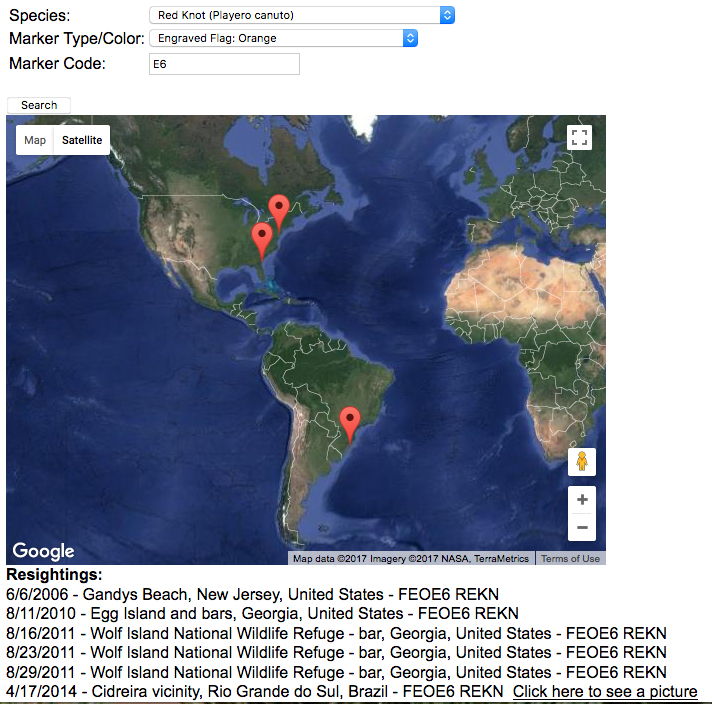
Here’s an example of the report showing the history of sightings of Red Knot E6. This bird was banded in Argentina, and over the past 10 years has been sighted in NJ, Georgia, and Brazil. It’s quite the traveler.
The Piping Plovers all have a rich New Jersey history too. Two plovers bred in the Holgate division of the Forsythe NWR (which is across the channel from where we spotted them), and two others were just fledged from that region. One of our breeding birds was initially banded in Andros Island in The Bahamas, which is an important wintering region for these plovers.
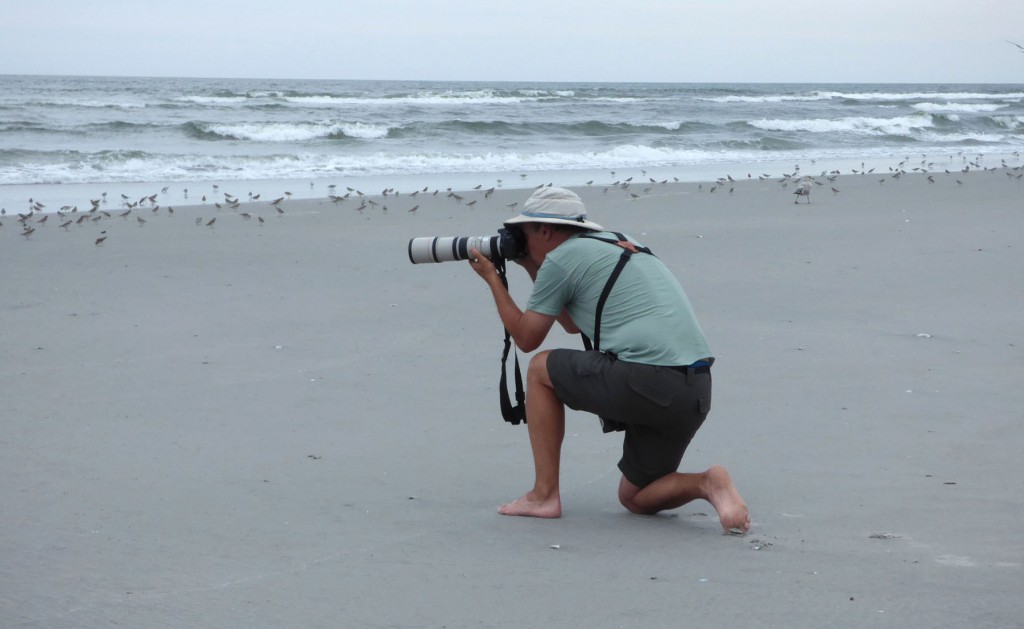
An intrepid birder / photographer trying to capture photos of the banded birds. I love barefoot birding!
We’ll be heading back to North Brig very soon to enjoy the fall shorebird migration up close and personal, and you can bet that we’ll be looking for more banded birds there too. Keep an eye out for any banded birds when you are out on the beaches or mudflats this fall and get good documentation of their banding pattern. Photos are best, but note the alphanumeric codes (if present), which leg the bands are on, what color the lettering is, and whether the bands are on the upper or lower legs.
